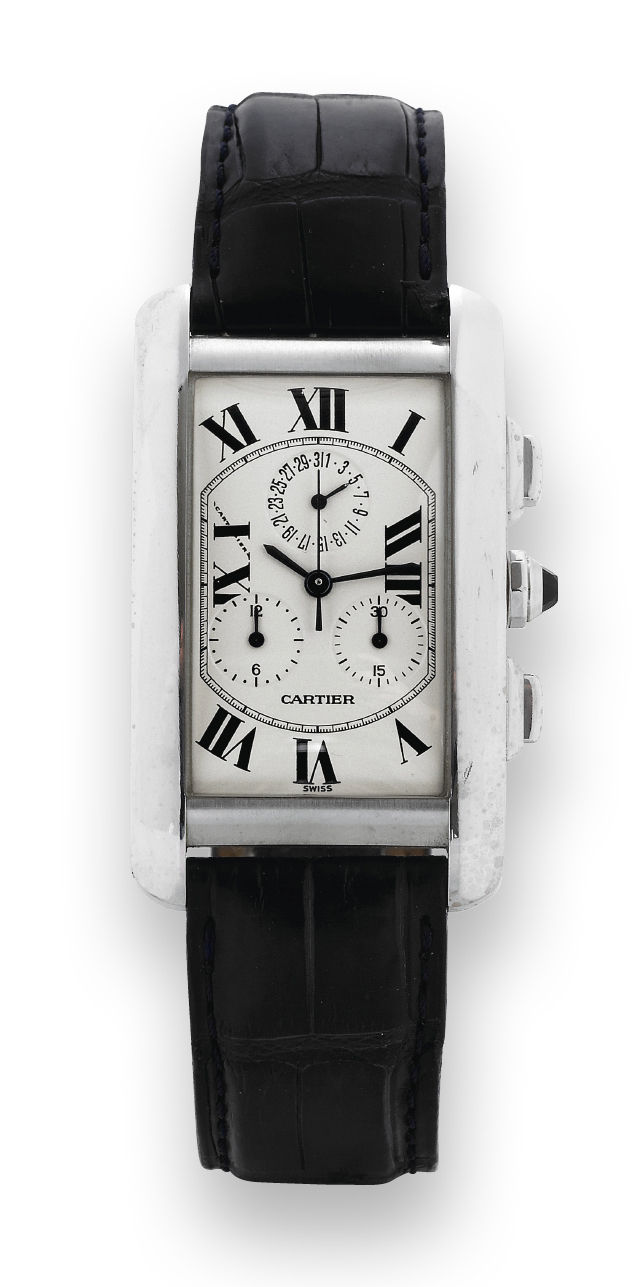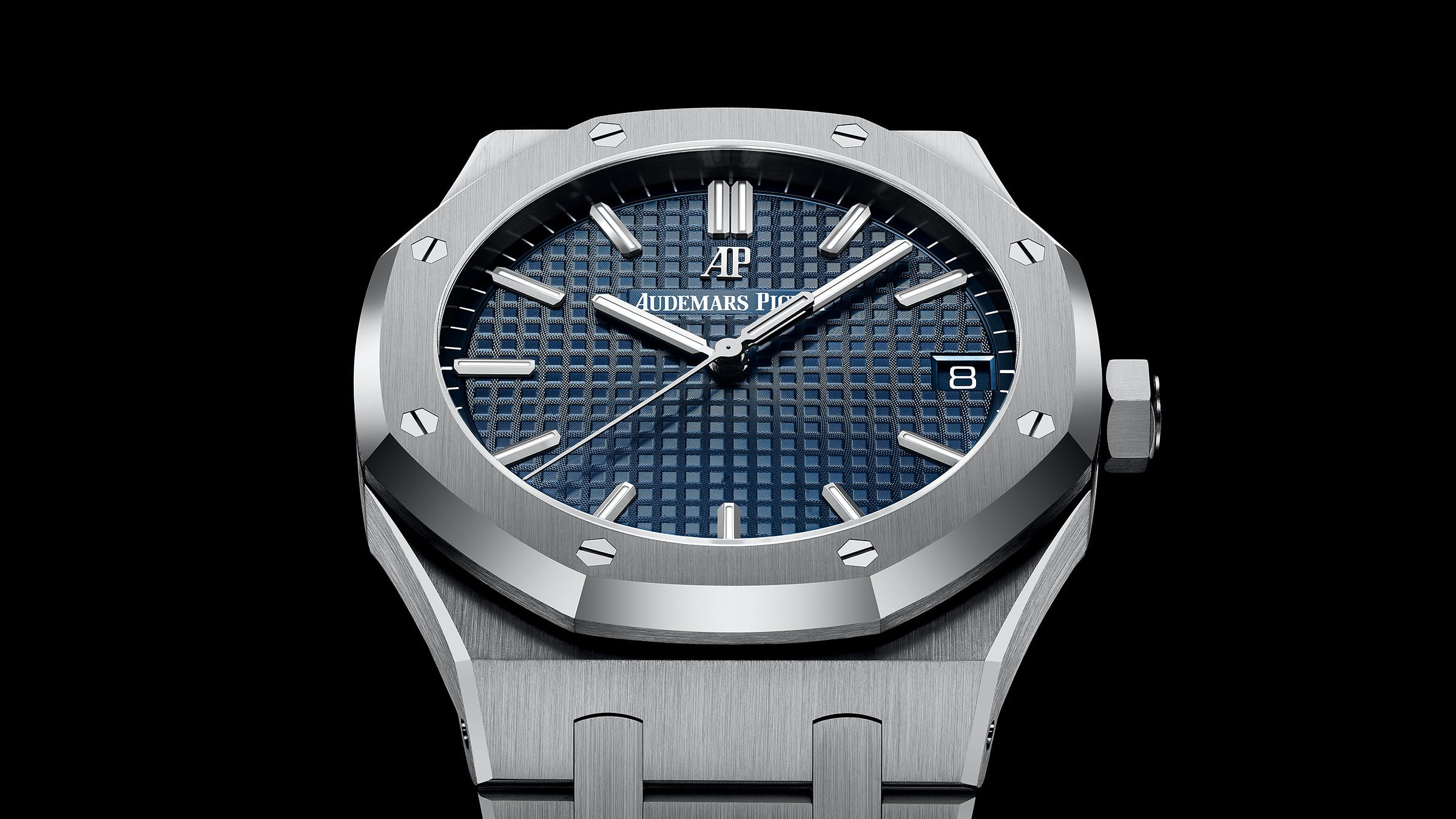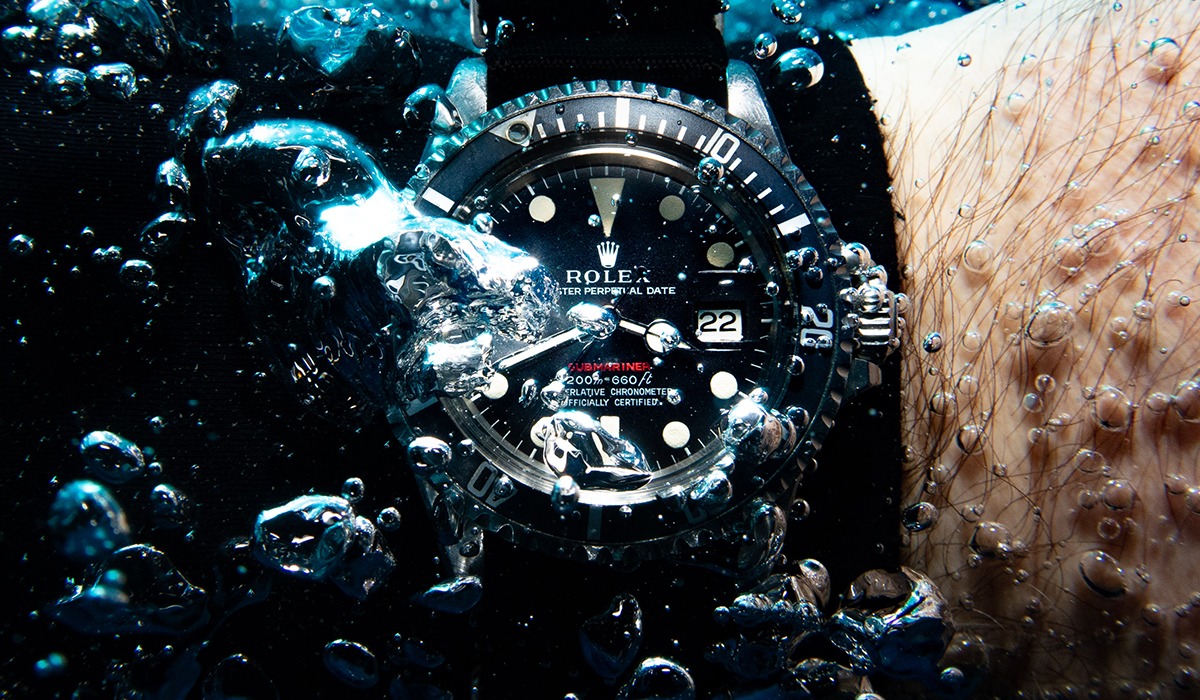The Cartier Tank is not only an archetype; it can fairly be considered the archetype of the modern wristwatch. The Tank was, after all, the result of Louis Cartier's prolonged struggle to solve what the famous French jewelry designer considered to be a downright offense of a timepiece on the wrist: that there was no smooth and elegant transition from the watch head to the bracelet or belt which secured it. Only a master designer who had literally grown up in a jewelry studio could have both cared so much about this formal feature and also come up with such an elegant solution: a rectangular watch which eliminated attached lugs to hold the strap or bracelet.
So ubiquitous is the rectangular watch now that it is difficult to see how revolutionary the Tank was when it debuted in 1917. Only six examples were produced that year, but the Tank went on to be produced in the millions by the end of the 20th century, and it is just as prolific in the 21st century.

Tank-Normal 1940s
Just about no one wore a watch on the wrist in 1917, and those who did were either well-dressed Victorian women, daredevil dandies piloting primitive aircraft and automobiles, or the occasional outdoorsman strapping on his rugged WWI “wristy,” an awkward leather watch mount for the wrist never worn in proper company. The Tank, which quickly made the rounds among royalty and rising industrial elites, set the stage for the wider adoption of wristwatches, a trend that began to displace the pocket watch toward the end of the 1930s and which became the norm by the end of WWII.
Unlike the wrist-worn watches that came before it, the Tank was a thing of modernity, both in its design and its name. Lore often tells us that Louis Cartier designed the Tank to look like the Renault tanks that helped France triumph during WWI, but because those machines were little known to civilians until after the war, the truth is more likely that Louis Cartier had cracked the code on how to integrate the bracelet into his new watch before he named it. Either way, there was a striking resemblance when seen from the top, and when Parisians cheered a fleet of Renault tanks as they rolled down the Champs-Élysées during a headline-making victory parade, Cartier saw no reason not to tap into the fascination these war machines held in France and internationally.

The first Tank watch was called simply The Tank, but as Cartier began to iterate on the design that original model became The Tank Normal. His second, less boxy iteration – and his favorite – became known as The Tank Louis. The variety of Tanks to pour out of Cartier's three main houses in Paris, London, and New York have filled large books, but a few key features remain uniform regardless of the variety of Tanks produced.
With only a few exceptions, Tanks possess only right angles when viewed from the top. There is a smooth, flat surface along the outer side of the case, and an uninterrupted parallel line from the inside of the strap mount through the inside of the case along the dial. The resulting beams – or, to extend the Tank metaphor, tracks – are typically called brancards, which translates from French roughly as poles, stretchers, or beams. It was often only the proportions of the brancards alone that distinguished one Tank iteration from another.

Tank Allongée
Despite these tight design restrictions – or perhaps because of them – there have been a seemingly innumerable number of iterations of the Cartier Tank. The Tank Chinois (c. 1922) is almost square. The Tank Allongée (c. 1922) is narrow and long. The Tank Divan (c. 2000) is a squat affair, wider than it is long. But, in essence they're all the same, and they're all Tanks. You simply can't manipulate a circle as you can a rectangle, and no single watch design has ever been as versatile as that of the Tank.

Tank Divan
The earliest Cartier Tanks took advantage of the miniaturization of the mechanical movement, specifically employing the then-independent movement maker Jaeger to produce the small and precise machines that powered the Tank for its first decade. This partnership made the Tank entirely French, which did much to recommend it, as Swiss watches had yet to be singled out as superior to French watches. Even today, an early Tank is a study in exceptional proportions made possible by the Jaeger movements designed and built specifically for Cartier. That relationship only lasted 10 years, the length of their contract.

Tank Louis. Image by Cartier
Over the years, Tanks have housed mechanical movements from the likes of Piaget and Journe (such examples are now quite collectible), though today Cartier produces their own movements. With its focus on value, precision, and thinness, Cartier embraced electronic quartz movements in the 1970s, and ever since it is quite common for a Tank to be powered by a quartz movement. Higher-end models tend to house mechanical movements, however, and it is not uncommon to find wildly innovative mechanical movements in the most highly valued modern iterations. Collectors should note, however, that a quartz movement is not necessarily a strike against a Tank.

1930 Tank Chinois. Image by Matthew Bain
Louis Cartier's design was based on such essential forms that, over a Century later, the Tank in its myriad forms remains among the most copied wristwatches of all time. It's hard not to think of a brand that hasn't issued a Tank-like watch, and it's easy to call up brands which have made little attempt to mask the imitation – Seiko, Hamilton, Omega, and so forth. Even storied houses like Vacheron Constantin have produced what are basically direct copies of the Cartier Tank. All of that imitation confirms what may not have been obvious when the Tank came out in 1919, but which is undeniable now: that Louis Cartier had created an horological archetype.






